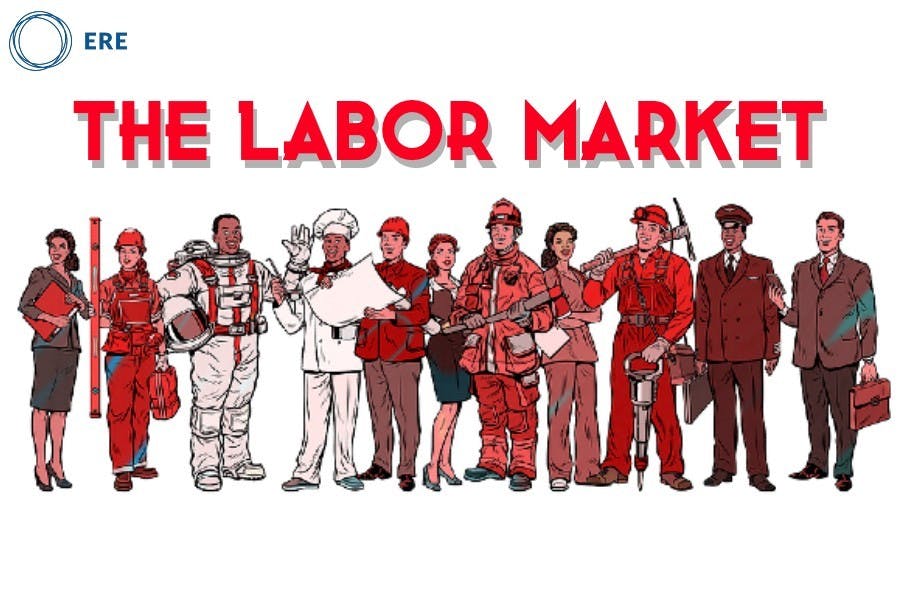Thud! That’s what it sounded like when the August job numbers were released earlier this month.
The labor market posted very impressive results in the first two months of summer. After upward revisions, June and July averaged slightly more than a million jobs added per month, but then came the biggest letdown in the national jobs report in months. The 235,000 jobs added in August were roughly one-third of the anticipated total, and it was the third lowest monthly figure since the initial rebound began in May 2020.
In last month’s column, I included a warning that a slowdown was coming, writing, “Do not be surprised to see the pace of job gains moderate from the torrid pace the last couple of months.” Still, the impact seems to have hit about a month earlier than expected.
In normal times, 235,000 jobs added in a single month would be phenomenal. With today’s record number of job openings and 8.4 million people unemployed, however, more was expected.
Silver Lining: Metros With Numbers Worth Noting
Even though the overall U.S. numbers disappointed, there were still positive stories to take out of the August results.
In August, six metros added at least 10,000 jobs, Los Angeles being the standout performer with 88,900 jobs added. That means more than 1 in 3 jobs added in August was in the City of Angels and its surrounding suburbs.
Two more locations hit a key milestone. Phoenix and Austin joined Salt Lake City as major metros that have recovered all jobs lost from the pandemic, though the jobs themselves are not necessarily all the same. For instance, Phoenix still has 11,500 fewer jobs in the hotel industry than before the pandemic, but it has added enough jobs in other industries, such as retail trade and construction, to offset the difference.
Jacksonville, Tampa, Raleigh, and Kansas City appear to be next on deck as they are all within 1.1% of their pre-pandemic employment level. The bad news about being at the top of this list is it likely means available talent supply is shrinking and these places will continue to need relocations to grow the pool of workers.
Demand for Talent Remains at Record Levels
The broken record continues. Job openings swelled to 10.9 million, the fifth consecutive month of setting a new peak. The problem does not seem to be on the demand side of the talent equation.
If it seems like the job market is as competitive and tight as it has ever been, there is a reason for that. The U.S. does not have enough unemployed people to fill all the open jobs. The ratio of persons unemployed to job openings is at 0.8, tied with the lowest rate on record. Anything below 1.0 means there are more jobs than people looking for them, and it fell below that level at the beginning of summer this year.
Meanwhile, the number of people voluntarily quitting their jobs also remains at a record level. The latest number was once again at 4 million people quitting their job in a single month. In the world of talent acquisition, that can be a good sign. It means that people are open to leaving to explore other opportunities. Some of those people leave the labor force, but most are accepting new roles. And enough people are re-entering the job market to cover for those no longer looking for work. So even if new job creation is not as robust as the during the last few months of 2021, the transition of talent from one job to another will continue.
Unemployment Checks Stopped. Now What?
The cessation of $300 weekly unemployment checks will not likely solve the talent-supply issue. It will likely give some more positive boost to job growth than if the policy remained in place, but there simply are not enough people receiving the benefits to solve the current demand for talent.
As of Sept. 4, two days before the additional $300 weekly checks were set to expire for states that had not already opted out of them, there were approximately 2.7 million people getting continued unemployment insurance benefits. That number was only approximately 1 million higher than the readings right before the pandemic began.
Now let’s say everyone from that gap accepted a job tomorrow. It would certainly help, but there are a combined 6.3 million open jobs right now in the following industries: professional and business, healthcare, restaurants and hotels, and retail trade. So there would still be more than 5 million jobs to fill, roughly two years of good job growth at the national level.
Hiring Outlook Shifts by a Quarter
Considerably slower job growth in August combined with a lingering impact from the latest Covid surge has changed the outlook for job recovery. As of now, most metros that have not fully recovered all lost jobs are facing about a three-month delay in their job recovery compared to the forecasts from mid-summer. Still, many locations will fully recoup all jobs by the end of 2022, but for those on the later waves of recovery in 2024 and beyond, any delay is critical.
Industries most impacted by this shift in the recovery timeline are unfortunately the same as those that have struggled to rebound to this point. For instance, leisure and hospitality added zero jobs in August, and it faces challenges of business and consumer demand not reaching full potential due to quarantining and safety concerns. Likewise, many other industries will continue to have their logistics of interviewing and getting candidates through the hiring process disrupted.
